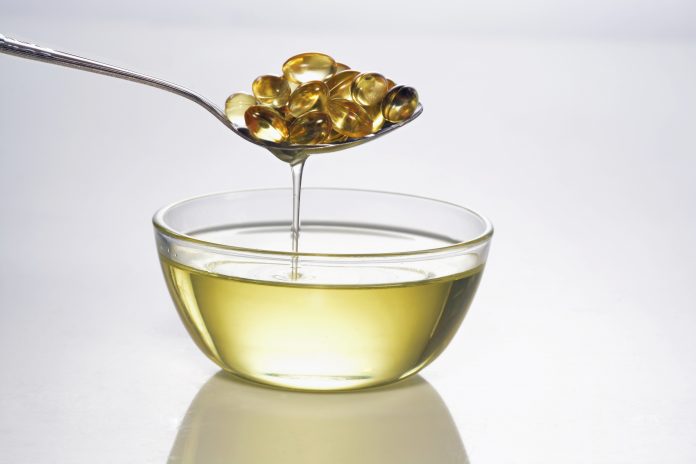Professor Charlotte Jacobsen and co-authors; Research Manager Heidi Johnsen, Dr. Rasa Slizyte, Dr. Revilija Mozuraityte, Dr. Wilhelm Glomm, Dr. Peter Molesworth, and Dr. Betül Yesiltas , explore how fish oil microencapsulation would allow for better fortification of food products and improve human health
Introduction:
Fisheries and aquaculture products are an important source of marine oils and proteins and a crucial component of a healthy diet. Polyunsaturated omega-3 fatty acids, so-called Omega-3 fish oils, have a well-documented positive effect on human health. Still, a significant fraction of the population does not consume the 2-3 fish meals per week required to reap these health benefits. This might, in many cases, be caused by a dislike of fish flavours, or by unwanted smell and taste of fish and fish products owing to oxidation and degradation of the fish oils. This dislike of ‘fishy’ flavours and off flavours from oxidised fish oils can also prevent people with poor access to fish products from using dietary supplements, such as liquid fish oils and traditional centimetre sized capsules.
Food fortification is one approach to increase the intake of fish-derived omega-3 oil, but omega-3 oils are unstable to cooking processes, resulting in oxidation and off flavours. If we can protect the omega-3 fish oils from degradation and mask any unwanted smell and taste, this would allow for better fortification of food products with omega-3 fish oils and thus help people reach the recommended intake.
At the same time, fisheries and aquaculture industries are facing a big challenge as the current exploitation is unsustainable due to the large amounts of marine rest raw material being used for the production of low-value products (silage, fish meals or fertiliser). More sustainable use of these side streams is necessary and of high interest given the global need for increased food production. As an example; in 2020, more than 1,000,000 tons of marine rest raw material were generated in Norway. With an estimated protein content of 15% and a lipid content of 20%, this valuable biomass contains more than 154,000 tons of proteins and about 200,000 tons of marine lipids that could be better used as a source of vital nutrition in food[1].
Salmon is the major species in Norwegian aquaculture and while most of salmon rest raw materials like skin and backbones are utilised today, the majority is used for the production of low-value feed ingredients. To obtain more sustainable utilisation, a techno-economically feasible process leading to high-quality products, which could be used for human consumption, is needed. Further, the amount of omega-3 fish oils in farmed salmon has been reduced significantly in the past decade primarily due to the use of vegetable oils in fish feed at the expense of fish meal and fish oil. The conventional methods used to up-concentrate omega-3 fatty acid content in the rest raw materials usually results in low yields. Therefore, there is both an interest and a need to find technological solutions to improve omega-3 content in salmon oils for human consumption.
How the OMEGA project will solve the challenges
The OMEGA project was initiated in 2020 with the aim of generating new knowledge and solutions that can contribute to higher human consumption of healthy omega-3 fatty acids from marine lipids and more sustainable use of rest raw materials from the fish farming industry. We will improve the extraction of omega-3 oils and fish gelatin from salmon rest raw materials to obtain good quality ingredients suitable for use in food. The use of plant-derived antioxidants will be evaluated to further enhance the stability of the oils during cooking.
The pure and up-concentrated omega-3 oils will be microencapsulated to protect them against degradation and to mask off-flavours.
Fish gelatin in combination with other food-grade materials (primarily plant-derived proteins) can constitute a protective capsule wall surrounding a droplet of oil. These microcapsules can then be incorporated into selected food products to increase the nutritional value without the unwanted smell of fish. Microcapsules are tiny capsules with a size typically less than 0.05 mm and can therefore be added to food without influencing the texture of the product.
Finally, the smell and taste of the fortified food products will be evaluated by a taste panel. Consumer studies will be performed to identify consumer concerns and perceptions towards food based on rest materials.
Results so far
During the first year of the project, we have been focusing on improving the extraction of omega-3 oils and fish gelatin and encapsulating the extracted omega-3.
Gelatin extraction results indicated that salmon skin and backbones are good resources for gelatin production. We have developed gelatin extraction technologies allowing us to extract up to 85% of hydroxyproline (one of the dominant amino acids in gelatin) from salmon skins and up to 55% of the available hydroxyproline from salmon bones. The salmon oil extracted from fresh salmon skins and bones has a very low amount of oxidation products. The sum of healthy omega -3 fatty acids in the oil was obtained to be approx. 5% of total fatty acids. A study on the use of crystallisation to remove some saturated fatty acids from salmon oil is still ongoing.
From the encapsulation side, we have worked to select and screen the most suitable encapsulation methods, that give protection to the oil during storage, provide desired capsule size, and can be scaled up cost-effectively. A particular focus on understanding challenges with encapsulating rest raw material oils which can behave differently from primary oils due to compositional variations has been needed.
We have investigated the effect of using different microcapsule wall materials like gum Acacia in combination with commonly used proteins (e.g. whey protein and bovine serum albumin) for the encapsulation of salmon oil. An optical contour analysis system is a way to measure the ability of these compounds to decrease oil-water interfacial tension, which gives an idea about their emulsifying and encapsulation activities. Results indicated that proteins’ ability to decrease oil-water interfacial tension was not significantly affected when combined with gum Acacia.
Microencapsulation explained:
A process in which tiny particles, droplets or bubbles are surrounded by a coating (a “wall”) to give small capsules. The microcapsules are 1-1000 µm in diameter (1 µm = 1/1000 mm, human hair is 80-100 µm wide). The coating, or wall material, can be used to protect the contents of the capsule, and prevent off flavours in food.
Want to learn more…
To learn more, please contact the project leader, Heidi Johnsen, Heidi.Johnsen@sintef.no
The work here is part of the the project ‘Fish oil microencapsulation generating fortified food products for improved human health’. Contributors to this article are:
Heidi Johnsen1, Revilija Mozuraityte2, Peter P. Molesworth1, Wilhelm R. Glomm1, Rasa Slizyte2, Betül Yesiltas3, Charlotte Jacobsen3
1 Department of Biotechnology and Nanomedicine, SINTEF Industry, Trondheim, Norway
2 Department of Fisheries and New Biomarine Industry, SINTEF Ocean, Trondheim, Norway
3 Research Group for Bioactives – Analysis and Application, National Food Institute, Technical University of Denmark, Copenhagen, Denmark
Literature
[1] Myhre, M. S., Richardsen, R., Nystøyl, R., & Strandheim, G. (2021). Analyse marint restråstoff 2020.SINTEF Ocean rapporter. NR: 2021:00633 A
Acknowledgement of funding
The OMEGA project is funded by the Research Council of Norway (Project No. 303497).
Co-authors:
Research Manager Heidi Johnsen Dr. Rasa Slizyte
Dr. Revilija Mozuraityte
Dr. Wilhelm Glomm
Dr. Peter Molesworth
Dr. Betül Yesiltas
Please note: This is a commercial profile












